+91-7676813665
bookings@traveljaunts.in
Login
Sign UpLoginSign Up
Login
Do not have an account?
Create an AccountSign Up
Already a member?
LoginLogin
Sign UpLoginSign Up
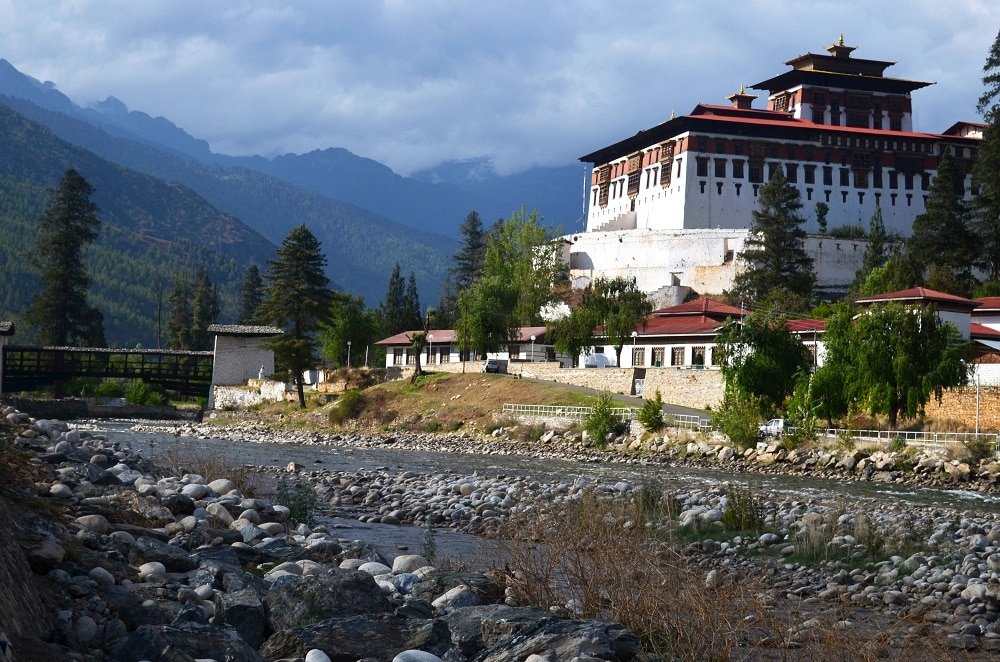
A small nation nestled high up in the eastern Himalayan region landlocked by Tibet in the north, Sikkim in the west, Arunachal in the east and the rest of India towards the south. Known as the kingdom of happiness to the world, Bhutan is nation enveloped in spirituality and folklore.
This is the land of pristine mountains, deep valleys, waterfalls, 70% forest cover, exquisite scenery, monasteries, dzongs (fortresses), dramatic landscapes, traditional Bhutanese culture, down to earth simple people, and Buddhism.
Unlike other nations, this country has changed little over years due to its restricted policies helping in the preservation of its culture & environment till date. One and the only nation where success is measured in Gross National Happiness. Interesting right?
Most importantly, Bhutan follows high-value low impact tourism which means you necessarily have to hire the local tour operators and adhere to the minimum daily package imposed by the government. Please note: This applies only to people other than Indians, Maldivians, and Bangladeshis.
Their policy is of sustainable tourism and all this is to discourage long term travel & cultural influences and create an aura of exclusivity. This country is very safe and people are amazingly good having a simple way of life.
Most people at their first Bhutan visit take a tour to Thimpu, Paro, and Punakha. However, depending on your interests you can choose to explore some of the beautiful treks this mountain country has to offer.
Some of the popular destinations are
Western Bhutan – Most people travel in the western Bhutan where lies Thimpu, Paro and Punakha.
Central Bhutan – This part is the country’s cultural heartland, hosts several of Bhutan’s oldest, most significant & sacred temples and monasteries.
Eastern Bhutan – This is towards the Tawang and Zimithang areas of Arunachal Pradesh (India). People hardly travel this far.

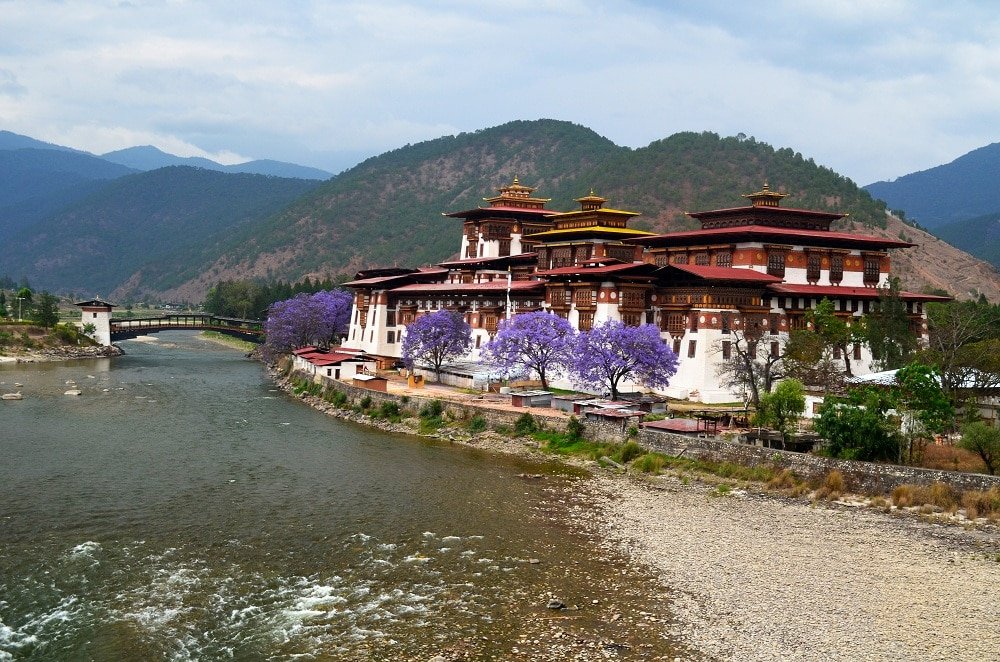
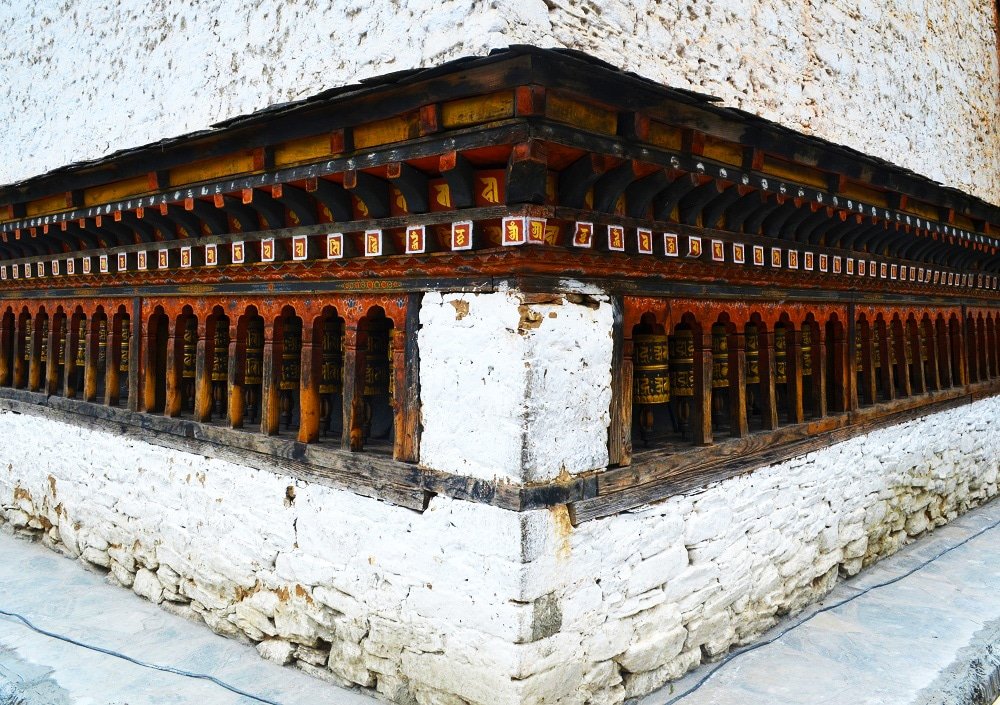
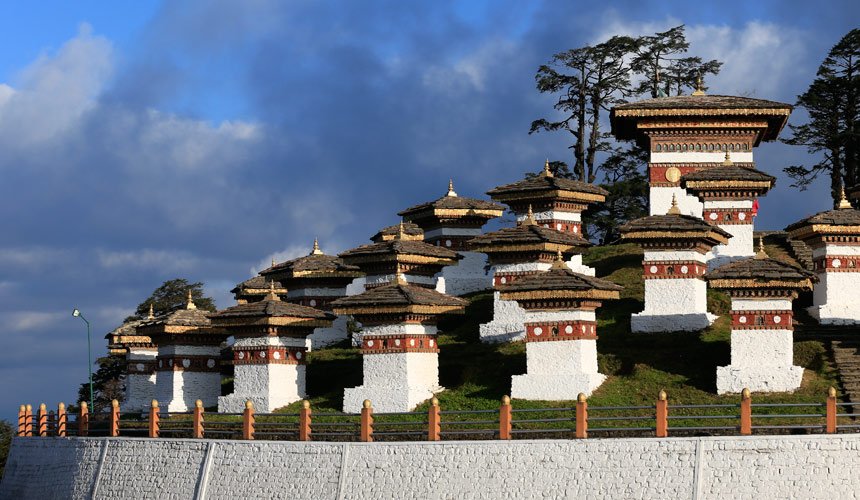
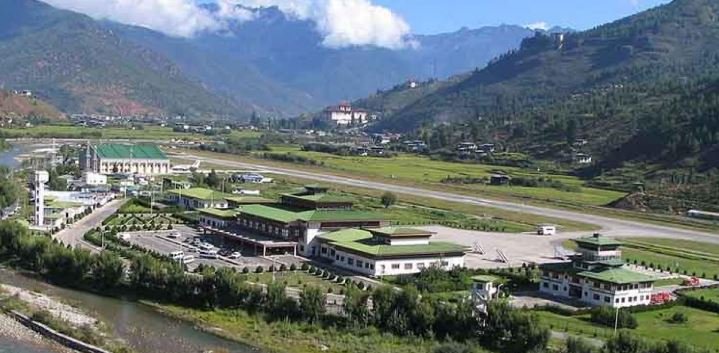
Capital – Thimpu
Population – 7.9 lakhs approx.
Language – Dzongkha or Bhutanese is the official language. It’s a Sino Tibetan language spoken by most people in Bhutan.
English and Hindi is also well understood by people in tourism sector infact English has been the medium of education since long. Besides, many people also speak Nepali
Currency– Ngultrum. It is almost at par with Indian currency. You can use Indian currency freely in Bhutan.
Interesting facts
Bhutan is one of the few countries in the world to have never been conquered or colonized.
This nation shifted from absolute monarchy to democratic constitutional monarchy and saw its first elections in 2008.
TV or Internet came into Bhutanese homes only in 1999
No plastics, no tobacco country. It’s the first country to recognize the rights of the environment in its constitution.
Thimphu is the only capital city in the world without traffic lights.
Bhutanese worship Phalluses as a sign of fertility and good luck. You can see them painted on the walls of the houses and temples.
Rather than using the GDP as an economic index, the country follows the unique principle of Gross National Happiness
Despite being a small nation, the cultural richness of Bhutan is profound. Bhutanese view children as progenitors of future and hence there is no discrimination between a boy and a girl.
Marriage is an important tradition. Used to be arranged however these days most people make their own choice. Fortunately, divorce too is not a thing of disgrace in Bhutan. People can simply move on with new life partners.
Religion
Bhutan follows the Tantric form of Mahayana Buddhism (Drukpa Kagyu). That is the state religion. You would find religion everywhere
Architecture & Art
Bhutan’s architectural styles are displayed by Dzongs (fortresses), Lhakhangs (temples), Goenpas (monasteries), Chortens (stupas), and housing units sprawling over the country.
Clothing
As part of the culture, you would find Bhutanese in their traditional dresses only. Men wear the Gho, a knee-length robe tied at the waist by a traditional belt known as Kera. Women wear the Kira, a long, ankle-length dress accompanied by a light outer jacket known as Tego with an inner layer known as Wonju. As tourists, you can wear anything as long as it is decent.
Customs and Traditions
Buddhism is widely followed and Tshechu is the main festival which marks the important events in the life of second Buddha – Guru Rinpoche.
Food
Food is primarily influenced by Indian, Chinese and Tibetan cuisines. Their dishes are often cooked using chilli and cheese. Ema Datshi is the national dish of Bhutan. You will find white or red rice often accompanied with seasonal vegetables, and meat (pork and chicken) as their main dishes. Bhutanese eat with their hands quite like Indians.
Indian cuisine is available in Thimpu at many places. Also, the hotels serve basic Indian dishes.
You can travel to Bhutan by air or by road.
By road, you can enter thru 3 overland openings: Phuentsholing, Manas National park / Gelphu & Samdrap, all in India.
Bhutan has just one international airport – Paro Airport – 6 km from Paro, in a deep valley on the bank of the river Paro Chhu. And there are two international airlines Druk air (run by the government) and Bhutan airlines (a division of Tashi air which is run privately). There are flights from India, Nepal, Thailand, Singapore & Bangladesh.
Bhutan is a year round destination however most tourist come around Spring season (March – June) or in autumn (Sept to November). If you would like to catch the festival time , then check for Tsechus Festival dates which happens around September /October.
Food, Stay, Local transport & Sightseeing
Other than Indians, Maldivians and Bangladeshis, all tourists need to take the complete package from the local tour operators which would include food, stay, local transport and sightseeing and pay a minimum of $250 per day per person (inclusive of stay, food, guide, transport, sightseeing, entrances). Children under 12 are exempt from the royalty component of $65. In $250, Bhutan government offers standard places of stay. If you need luxury stays, you would need to pay additional. Check with your tour operator for the same. Since tours are prepaid so you would need cash only for extra miscellaneous things like laundry, tips, drinks etc.
Indians, Bangladeshis, and Maldivians can set their own budget.
Stay – Budget hotels come in the range of $20-$40 and luxury ones in the range of $250- $400
Bhutan is very safe. We felt that the tour operators are honest and simple. No one in Bhutan will try to really fleece you. They work as per policies and tourism mandate.
Indian don’t need a visa to travel to Bhutan however they need an identification slip issued by the consulate office in Phuentsholing upon presenting proof of Indian citizenship. Carry either an Indian Passport or Voter ID or Aadhar card.
Bangladeshi, Maldivian also do not require visa while coming to Bhutan. Besides, Thai and Swiss nationals holding official and diplomatic passports also don’t require a visa for Bhutan.
All other tourists must obtain a visa clearance prior to travel to Bhutan. Visas are processed through an online system by your licensed Bhutanese tour operator, directly or through a foreign travel agent.
You are required to send the photo-page of your passport to your tour operator who will then apply for your visa. The visa will be processed by the Tourism Council of Bhutan (TCB). Once the full payment of your holiday (including a USD $40 visa fee) has been wire transferred and received in the TCB bank account, the visa clearance will be processed within 72 working hours.
At your point of entry, you will be required to show your visa clearance letter, the visa will then be stamped into your passport.
Go trekking to Tiger’s Nest (Taktsang Palphug Monastery – Paro). This can be difficult for families with small children and senior citizens and hence use your discretion. You could also take turns to do this trek leaving children behind. It takes 4+ hrs for the total journey. That’s what we had done. While my husband had gone, I was looking after the child.
Visit Punakha Dzong located at the confluence of beautiful rivers of Pho Chhu and Mo Chhu in Punakha & Khuruthang , Bhutan.
Visit Dochu La pass and spend some time at the nearby café – scenic spot located more than ten thousand feet above sea level, while going from Punakha to Thimphu
Take a tour to Bumthang sacred sites – One of the most beautiful parts of Bhutan known as Switzerland of the east. There are open valleys, snow capped mountains, green country side and mountain streams. Bumthang has the most sacred and ancient temples of Bhutan
Attend a game of archery, the national sport of Bhutan – This you can attend at Thimpu during one of the evenings. The best part of this game is no matter who wins, all of them dance together after every turn as per the culture.
For some offbeat experiences in Bhutan
Do the Snowmen’s trek – If you love trekking (not recommended for families with small children and aged parents, you got to be fit)- The Snowman Trek is our most challenging trek in Bhutan and ranks amongst the very finest anywhere in the Himalaya. Not everyone’s cup of tea.
It is undertaken only by a handful of trekkers and takes you to the most remote regions of Bhutan. The trek crosses eleven high passes over 4,500m that define the borders of Bhutan and Tibet.
Visit national parks – If you are fond of wildlife, you may like to visit Jigme Dorjee national park, Royal Manas national park, and Jigme Singye Wangchuck National Park.
In this section, we give itinerary suggestion for family with kids and for couples .
7-days itinerary for a family with kids
Day 01: Paro Airport – Thimphu
(Distance: 55km/ Driving Time: 1.5 hrs / Altitude of Thimphu: 2400m, 7874 ft.)
Evening explore the Thimphu town by walk. Overnight stay at Thimphu.
Day 02: Thimphu Sightseeing
Visit Kuensel Phodrang (Buddha Statue) world largest sitting Buddha statue which gives awesome views of Thimphu valley, National Memorial Chorten (Stupas) which remembers the father of modern Bhutan. Folk Heritage Museum gives inside of living arts of Bhutanese life of rural Bhutan. Afternoon visit Changangkha Monastery the oldest temple in the valley, Sangaygang View Point often known as BBS tower and lovers point. Taking Preserve Centre, the talking national animal of Bhutan can be seen here. Interesting weekend markets to peep for local produce. Overnight stay at Thimphu.
Day 03: Thimphu – Punakha/Wangdue Sightseeing
(Distance: 77km/ Driving Time: 3hrs / Altitude of Punakha: 1350m, 4429 ft.)
After breakfast drive to Punakha / Wangdue, On the way Stop at Dochu-La-Pass (3150m, 10334 ft.). to view the great Himalayan ranges. En-route take a short excursion trip to visit the Chhimi Lhakhang – The Temple, also known as “The Temple of Fertility” was built by Lama Drukpa Kuenley, “The Devine Mad Man”. After noon visit Punakha Dzong – built in 1637 by Zhabdrung Ngawang Namgyal. The Dzong was named Druk Pungthang Dechen Phodrang (Palace of Great Happiness). Punakha is still the winter residence of Je-Khenpo religious head of Bhutan. King Jigme Dorji Wangchuck convened the first National Assembly here in 1952. Arrival at Punakha check in at hotel. Evening free for leisure. Overnight stay at Punakha / Wangdue.
Day 04: Punakha/Wangdue – Paro Sightseeing
(Distance: 140km/ Driving Time: 4.5 hrs. / Altitude of Paro: 2200m, 7217 ft.)
Drive to Paro , via Dochula pass, the most beautiful pass in Bhutan. On arrival in Paro, check into the hotel. Evening enjoy outdoor activities including shooting archery and playing dart.
Day 05: Paro sightseeing
Visit famous Taktsang Monastery – called “Tiger’s Nest” (2hrs hike from the base camp for regular trekker) however for those you are not used on Himalayan walks can do optional visit to Drukgyel Dzong & Kitchu Monastery. Overnight stay at Paro.
Day 06: Chelela Excursion/Paro Sightseeing
(Distance: 72km/ Driving Time: 3hrs. / Altitude of Chelela Pass: 3988m, 13083 ft.)
Drive to visit Chelela pass, Afternoon visit Ta Dzong – National Museum with an excellent collection of arts, relics, religious thangkha, etc. Rinpung Dzong – Meaning “fortress of the heap of jewels” The dzong now serves as the administrative and judicial seat of Paro. Evening free for leisure. Overnight stay at Paro.
Day 07: Paro Airport
After breakfast check out from hotel and drop at Paro Airport for your onward journey.
10 days Bhutan itinerary for a couple
Day 01: Arrival in Paro to Thimphu (1.5 Hr)
Visit interesting weekend market (Thu-Sun) and explore the city by walk or visit Tashichho Dzong, which houses throne room of His Majesty the King. Overnight in Thimphu, altitude 2400m
Day 02: Thimphu sightseeing
In the morning, visit handmade paper mill, School of Arts and crafts or see an archery match. After lunch, drive pass by memorial chorten built in memory of the 3rd King. Visit Buddha viewpoint, Changangkha Lhakhang, the oldest temple in the valley, enclosure where national animal, Takin are kept and Zilukha Nunnery. Overnight in Thimphu
Day 03: Thimphu to Punakha (3 Hrs)
Drive to warm valley of Punakha over the most beautiful pass in the country called Dochula pass at 3150m. En-route walk through the rice field of Mesina to Chimi Lhakhang, Temple of fertility. Afternoon, visit the most beautiful Punakha Dzong, which houses the most elaborated temple in the country. The Dzong, showcase the finest example of the arts and crafts of Bhutan. Overnight in Punakha, altitude 1350m
Day 04: Punakha to Trongsa (5 Hrs)
Visit Wangdue ruin Dzong. Continue to Trongsa over Pelela Pass at 3300m which forms the part of Black Mountain Range that divides the country into east and west. On arrival in Trongsa, visit Trongsa Dzong which was ancient home of the royals. Evening explore the tiny town on foot. Overnight in Trongsa, altitude 2200m
Day 05: Trongsa – Jakar (3 Hrs)
Visit watch tower which houses a museum now and further drive to Jakar-Bumthang over Yotongla pass at 3400m. Also, visit white bird fortress, Jakar Dzong. Overnight in Jakar, altitude 2650m
Day 06: Jakar sightseeing
Visit Jampay Lhakhang, one of the oldest temples built in the country. This is the home of the naked dance that is still performed annually. Visit Kurjey temple, the site where the royals were cremated. One can either walk cross the suspension bridge and visit the village of Parar and Tamshing on foot or drive there. End your day with a walk passing by the Swiss farm. Overnight in Jakar
Day 07: Jakar to Phobjikha (6-7 Hrs)
Enjoy the freshness of morning breeze from Chamkhar river. Visit valley of black necked cranes and rhododendron called Phobjikha, often called as Gantey too. Its is a drive crossing two highest passes Yotongla at 3400m and Pelela at 3300m pass before entring into Phobjikha valley. Visit between May to Jun is greeted with beautiful rhododendrons and visit between Nov to Feb gives the chance to see the world rare bird black necked cranes. Visit Gangtey Gompa, the largest and the only monastery of the Nyingmapa sect in western Bhutan. Evening take a beautiful gangtey trail which will take about 2 hours one way, walk not recommended for rainy days. Overnight in Phobjikha, altitude 2900m
Day 08: Phobjikha to Paro (6 Hrs)
Visit National Museum, the first of its kind which has a collection from natural history to religious paintings. Visit 17 century Paro Dzong (Fortress) on foot and continue walking through the oldest wooden bridge still in use.Overnight in Paro, altitude 2200m
Day 09: Paro sightseeing
Visit Taktsang Monastery or often called Tiger Nest Temple which is built around a cave in which Guru Rimpoche (also known as Guru Padmasambhava) meditated. The eighth century old monastery is perched on a rock overlooking a sheer drop and clings seemingly impossible to a cliff of rock at 900m above the valley floor. Overnight in Paro
Day 10: Fly back from Paro
Do give due respect to the culture, traditions and the royalty in Bhutan.
Do cover your heads when entering the Dzongs & monasteries.
Do carry cash as credit cards are not widely accepted.
Do give tips generously even though it is not a must. They don’t expect it really. But since Bhutan is a poor nation and depends on agriculture and tourism only, tipping does make sense.
Do carry enough clothes and dress decently, shopping is limited in Bhutan except for traditional handicrafts, souvenirs and basics.
Do not smoke and do not litter, it’s a no plastic zone.
Don’t harm the environment in any way.Bhutanese consider mountains to be dwelling places of Gods and their constitution gives rights to environment.
Don’t give sweets and money to children.
Don’t but expensive antiques – export of antiques is strictly prohibited in Bhutan so ask your guide before making any purchase.